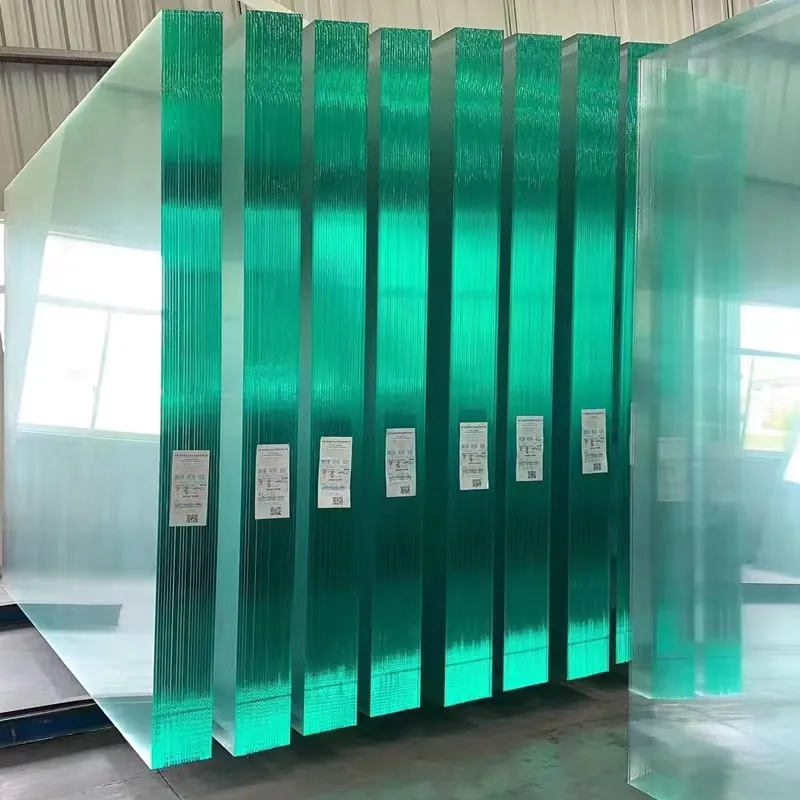The Art and Science of Glass Structure Design
Glass has transcended its traditional role as a mere building material to become a pivotal element in modern architecture. The design and application of glass structures are a fascinating interplay between aesthetics, functionality, and technological innovation. As urban landscapes evolve, glass structures have become symphonic statements of transparency, lightness, and connectivity, attracting architects and engineers to explore new dimensions of design.
One of the primary advantages of using glass in structure design is its ability to facilitate natural light penetration. In urban environments, where space is often limited, maximizing daylight not only enhances the aesthetic value of a building but also contributes to the well-being of its occupants. Research has shown that access to natural light can significantly boost productivity and improve mood. By integrating large glass facades, skylights, and expansive windows, architects can create inviting environments that blur the boundaries between indoor and outdoor spaces.
However, the aesthetic appeal of glass structures extends beyond mere light transmission. The transparency offered by glass allows for visual connectivity between different areas of a building and the surrounding environment. This can create a sense of openness and encourage interactions among occupants. The iconic Glass House designed by Philip Johnson in 1949 exemplifies this concept. Its floor-to-ceiling glass walls dissolve the barriers between the interior and the landscape, offering a seamless transition that invites nature inside.
While the benefits of glass in architectural design are well-documented, the complexities of working with this material cannot be understated. The mechanical properties of glass differ significantly from more conventional building materials like steel and concrete. Glass is inherently brittle, making it vulnerable to structural failures if not designed correctly. As such, modern glass structure design demands advanced engineering techniques, rigorous testing, and innovative solutions.
glass structure design
One of the most significant developments in glass technology is the introduction of insulated and laminated glass. These products offer improved thermal performance and safety features. For example, laminated glass can hold together when broken, reducing the risk of injury. Insulated glass units (IGUs) enhance energy efficiency by minimizing heat transfer, which is crucial for meeting sustainability standards in modern architecture. Adopting these technologies not only elevates the structural integrity of glass buildings but also makes them more environmentally responsible.
The design of glass structures also incorporates considerations for wind loads, thermal expansion, and seismic resistance. Advanced computer simulations and modeling techniques have emerged as indispensable tools in glass structure design. Engineers employ finite element analysis (FEA) to predict how glass will behave under various conditions, allowing for more informed design decisions. By understanding the material's response to external forces, architects can optimize their designs for safety and performance.
Moreover, the integration of smart technologies into glass structures is revolutionizing the field. High-performance coatings can enable self-cleaning properties, reduce glare, and enhance thermal regulation. Smart glass technologies, which can transition from transparent to opaque, offer privacy and energy savings at the touch of a button. These innovations not only contribute to the functionality of glass structures but also reflect a growing trend toward sustainable architecture.
In conclusion, the design of glass structures is a multidisciplinary endeavor that marries aesthetics with engineering precision. The use of glass in architecture has opened up new avenues for creativity, allowing designers to push the boundaries of what is possible in building design. As we move toward a future that prioritizes sustainability and well-being, the innovative use of glass will undoubtedly play a crucial role in shaping our urban environments. By harnessing the unique properties of glass, architects can create spaces that are not only visually stunning but also functional, safe, and eco-friendly. As technologies continue to evolve, the possibilities for glass structure design are limitless, inviting endless exploration and expression in the architectural landscape.
 Afrikaans
Afrikaans  Albanian
Albanian  Amharic
Amharic  Arabic
Arabic  Armenian
Armenian  Azerbaijani
Azerbaijani  Basque
Basque  Belarusian
Belarusian  Bengali
Bengali  Bosnian
Bosnian  Bulgarian
Bulgarian  Catalan
Catalan  Cebuano
Cebuano  Corsican
Corsican  Croatian
Croatian  Czech
Czech  Danish
Danish  Dutch
Dutch  English
English  Esperanto
Esperanto  Estonian
Estonian  Finnish
Finnish  French
French  Frisian
Frisian  Galician
Galician  Georgian
Georgian  German
German  Greek
Greek  Gujarati
Gujarati  Haitian Creole
Haitian Creole  hausa
hausa  hawaiian
hawaiian  Hebrew
Hebrew  Hindi
Hindi  Miao
Miao  Hungarian
Hungarian  Icelandic
Icelandic  igbo
igbo  Indonesian
Indonesian  irish
irish  Italian
Italian  Japanese
Japanese  Javanese
Javanese  Kannada
Kannada  kazakh
kazakh  Khmer
Khmer  Rwandese
Rwandese  Korean
Korean  Kurdish
Kurdish  Kyrgyz
Kyrgyz  Lao
Lao  Latin
Latin  Latvian
Latvian  Lithuanian
Lithuanian  Luxembourgish
Luxembourgish  Macedonian
Macedonian  Malgashi
Malgashi  Malay
Malay  Malayalam
Malayalam  Maltese
Maltese  Maori
Maori  Marathi
Marathi  Mongolian
Mongolian  Myanmar
Myanmar  Nepali
Nepali  Norwegian
Norwegian  Norwegian
Norwegian  Occitan
Occitan  Pashto
Pashto  Persian
Persian  Polish
Polish  Portuguese
Portuguese  Punjabi
Punjabi  Romanian
Romanian  Russian
Russian  Samoan
Samoan  Scottish Gaelic
Scottish Gaelic  Serbian
Serbian  Sesotho
Sesotho  Shona
Shona  Sindhi
Sindhi  Sinhala
Sinhala  Slovak
Slovak  Slovenian
Slovenian  Somali
Somali  Spanish
Spanish  Sundanese
Sundanese  Swahili
Swahili  Swedish
Swedish  Tagalog
Tagalog  Tajik
Tajik  Tamil
Tamil  Tatar
Tatar  Telugu
Telugu  Thai
Thai  Turkish
Turkish  Turkmen
Turkmen  Ukrainian
Ukrainian  Urdu
Urdu  Uighur
Uighur  Uzbek
Uzbek  Vietnamese
Vietnamese  Welsh
Welsh  Bantu
Bantu  Yiddish
Yiddish  Yoruba
Yoruba  Zulu
Zulu 

